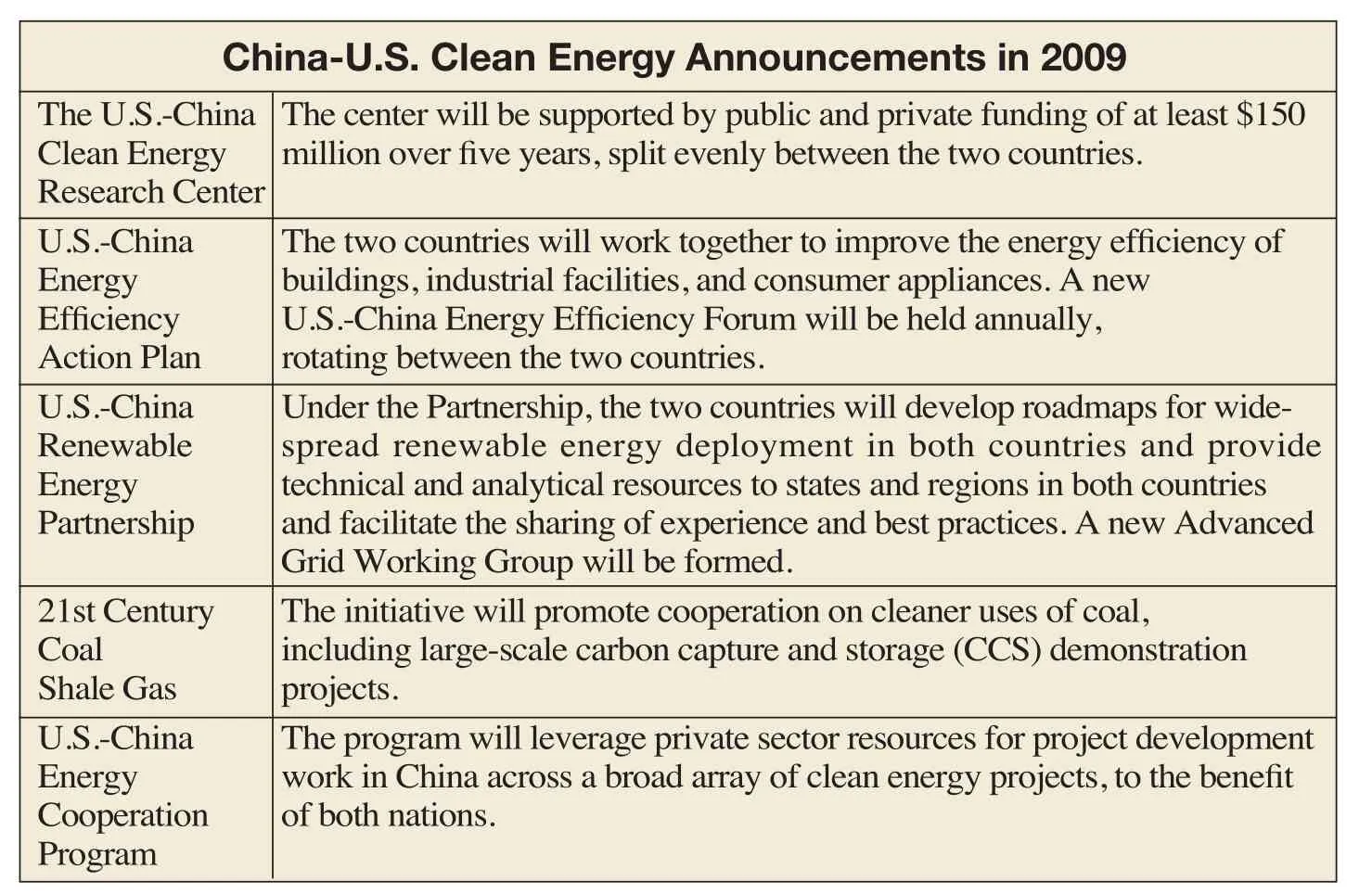Partnership for a Clean Future
2010-10-14ByWANGHAIRONG
By WANG HAIRONG
Partnership for a Clean Future
By WANG HAIRONG
Potentials and challenges in China-U.S. clean energy cooperation
Having lived in China for almost three decades, Sabina Brady is a de facto China hand. Currently, she is the executive director of the U.S.-China Energy Cooperation Program (ECP), a nonprofit organization that engages in market development and promotion of clean energy within the framework of China-U.S. bilateral government commitments on the environment and energy.
Fossil fuels are not only non-renewable,but also heavily polluting, Brady said. This is why the world needs to shift to clean energy and renewable resources.
“Transition to clean energy is the largest challenge in the 21st century. If we fail to effectively tackle this problem, not only will we get poorer and less comfortable, but our own long-term sustainability will be in question,” said Brady.
“As the world’s two largest economies and polluters, we also have the responsibility to cooperate and set an example for others,”Brady said.
Established in September 2009, the ECP has expanded from 24 members to 38, made up primarily of large U.S. multi-national corporations such as First Solar, IBM, Boeing,GE and DuPont.
The ECP’s business development support and facilitation operations are funded solely through member dues.
Some of the ECP’s clean energy business development projects have secured targeted program funding from the U.S.Trade Development Agency (USTDA).In addition to USTDA seed funding, these projects rely on combined cash and technical contributions of the member companies and their Chinese partners to succeed.
The ECP has 10 working groups, which are the engine of the organization and its business development efforts. These working groups focus on different areas of the clean energy sectors.
Member companies self-select into different working groups. Each working group identifies those areas and market and business development projects that it believes are viable for commercial development. Most critically, they must also be in alignment with U.S. and Chinese bilateral agreements and commitments in clean energy and the environment.
Because of the importance of this last requirement, the ECP gained recognition from both the Chinese and the U.S. governments during U.S. President Obama’s visit to China in November 2009.
During the 2009 Beijing summit, the two countries announced seven cooperation programs in clean energy, including ECP,according to a release by the White House Of fi ce of the Press Secretary.
“Transition to clean energy is the largest challenge in the 21st century. If we fail to effectively tackle this problem, our own longterm sustainability will be in question.”
—Sabina Brady, Executive Director of the U.S.-China Energy Cooperation Program
The seven programs also include building a U.S.-China Clean Energy Research Center.So far, the U.S. Department of Energy has announced three consortia. Within these three consortia, there are a number of founding ECP member companies.
One of the consortia is led by the University of Michigan and aims to advance technologies for clean vehicles, while another led by West Virginia University focuses on the next generation of clean coal technologies, including carbon capture and storage. A third led by Lawrence Berkeley National Laboratory is concerned with energy-ef fi cient building technologies.
“ECP strives to walk the walk,” Brady said. She added that a number of projects have been kicked off, including two under ECP’s Clean Transportation Working Group.These are a diesel retro fi t project for public vehicles in Shanghai, and a sustainable aviation biofuel industry development project with PetroChina and the Civil Aviation Administration of China as critical partners.
Of course there are challenges in clean energy cooperation. It is not easy to bring big commercial sector players together who also compete, at times, with each other. “But there are many new markets where cooperative effort can result in both a cleaner and more sustainable world and profitable bottom lines,” Brady said.
Another challenge is that some Americans worry that China’s fast growth in green energy equipment may cost hi-tech manufacturing jobs in the United States.
Brady said her organization’s mission is to be a platform where differences in the clean energy area can be discussed and mutually bene fi cial solutions found.

(Source: Press release by White House Of fi ce of the Press Secretary)
